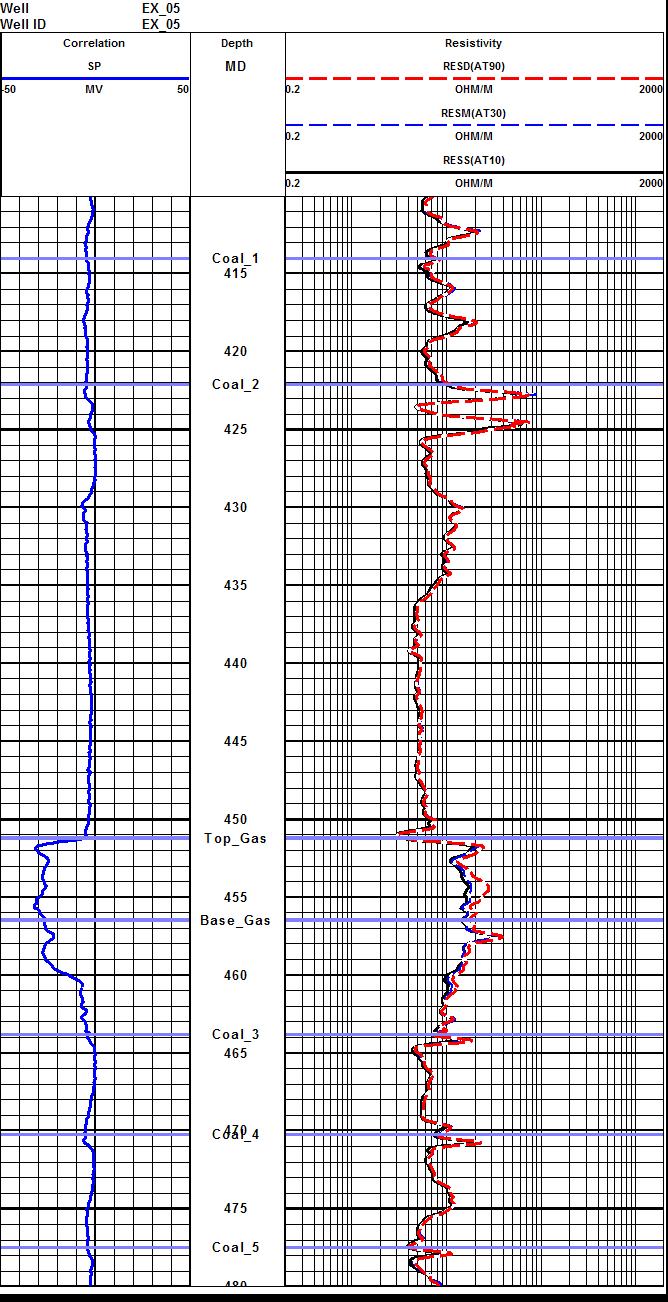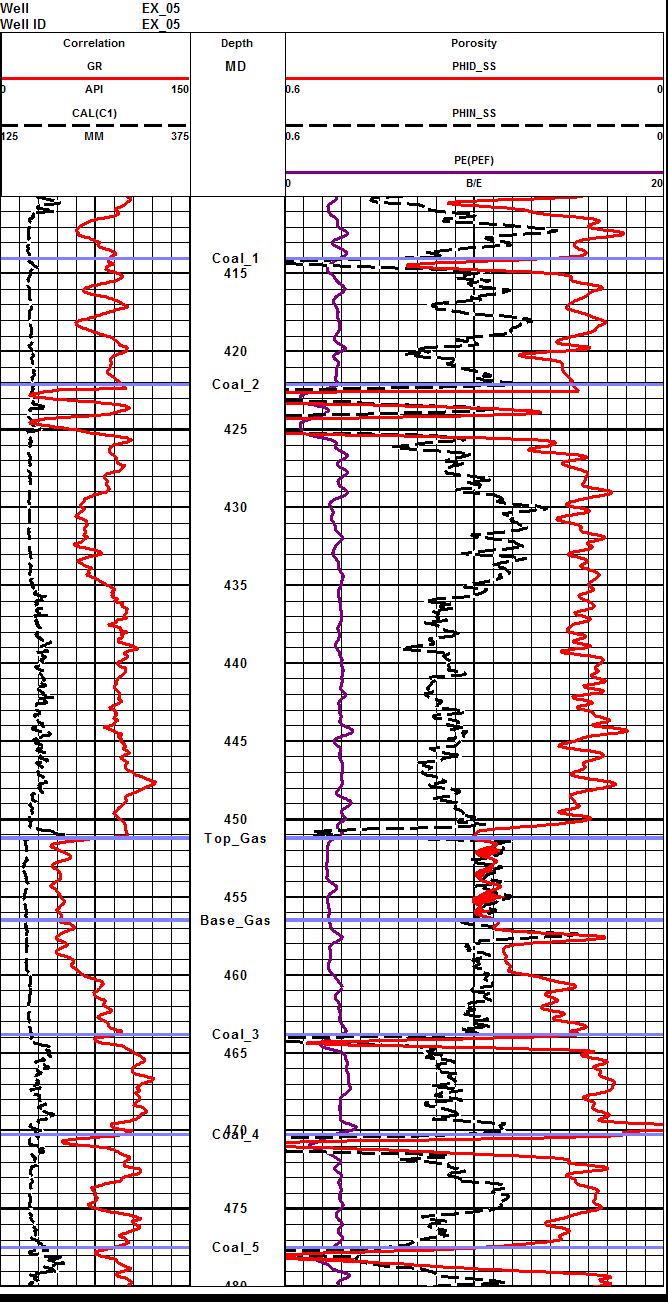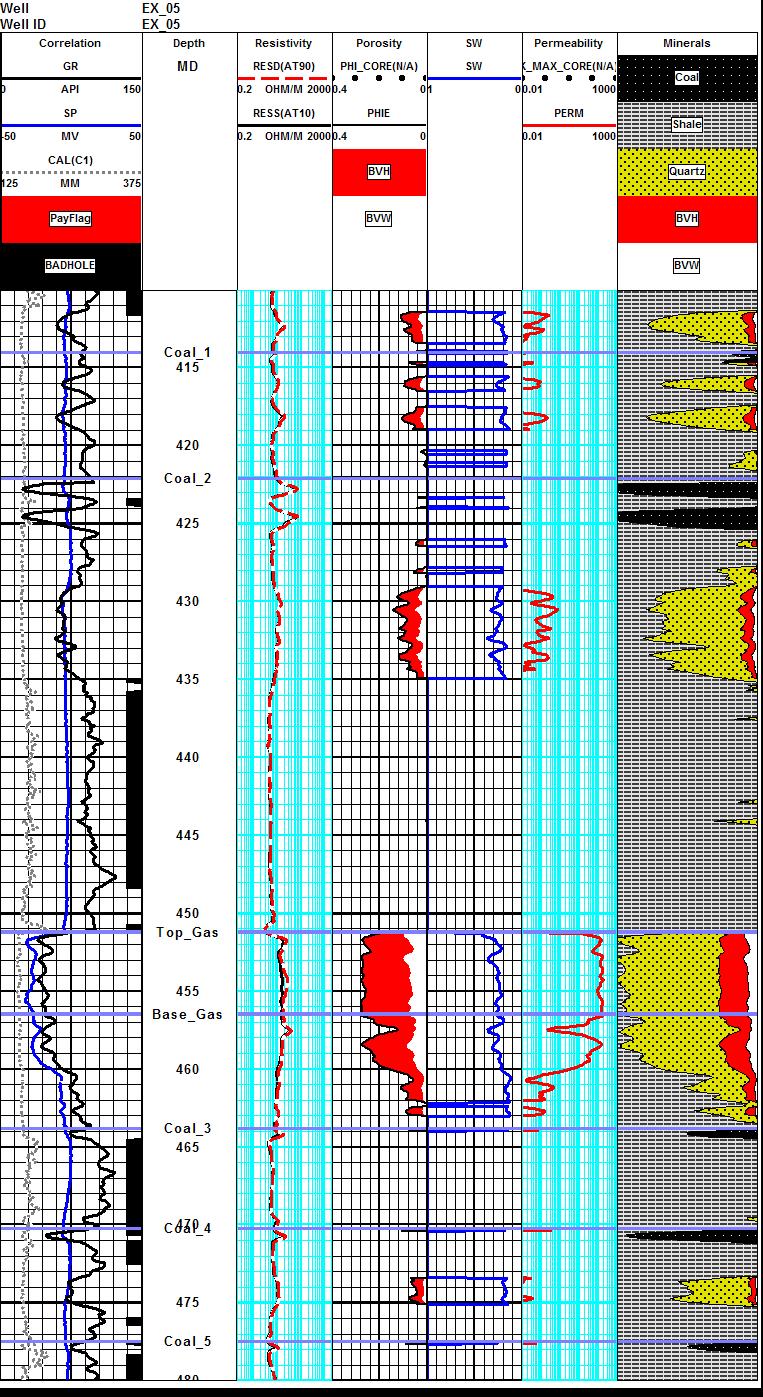|
 SHALLOW GAS SAND WITH COAL
SHALLOW GAS SAND WITH COAL
This case history shows a number of obvious
and not so obvious features of petrophysical analysis in
sands and shaly sands. The obvious is the clean sand with a
minor amount of
crossover on the density neutron log.
Combined with the high resistivity, there is no doubt that
this is a gas zone. Both SP and GR show the clean sand.
Above the obvious sand, there
is a shaly sand section. This interval
is typical of many so-called "shallow gas sands". In fact,
there are more than 40 shaly sands in this well, all of them
potentially gas bearing. The moderate GR and moderate resistivity at
this depth indicate gas. The SP has a very slight deflection, so
this zone is not easy to find on ancient logs when there is no GR
log.
The trick is to segregate the
coals, which may be coal bed methane prospects, and fresh water
sands, which are easily mistaken for gas sands.
Coal is easily detected by
the high density porosity, high neutron porosity, and high
resistivity values, and should be given zero effective porosity and
coloured black on the answer plot.
Fresh water sands are
difficult to distinguish in shaly rocks. Gas bearing
"fairways" are found by trial and error (testing and production).
Integration with hydrodynamics is a useful approach to help define
fairway boundaries.

SP (Track 1) and linear scale
resistivity log (Track 2) displayed on a compute rplot to simulate
an ancient ES log. Gamma ray log, shown in Track 3 might come from a
cased hole correlation log or from an ancient gama ray neutron (GRN)
log. Many shallow gas plays are developed frm ancient logs. The good
SP and the 20+ ohm-m resistivity is a good shallow gas prospect. The
shaly sand is harder to see as there is little SP development but
higher than average resistivity. The shaly sand is much more obvious
on the GR display. Coal beds need to be identified (no SP, high
resistivity compared to gas sand).

Here is the same resistivity log displayed on a logarithmic grid.
The gamma ray is on the density neutron log shown below.

On a mpdern well, the clean gas zone is obvious because of its high resistivity and
density neutron crossover. The shalier sands above the obvious sand are less clear -
but local experience says "GAS". Coal beds are easy to see
on the density and neutron log curves.


The "Base of Gas" is the base of
gas crossover, but it is obvious that there is gas below
this point. There are 400 meters above and 400 meters below this
interval that have more zones of interest.
|

